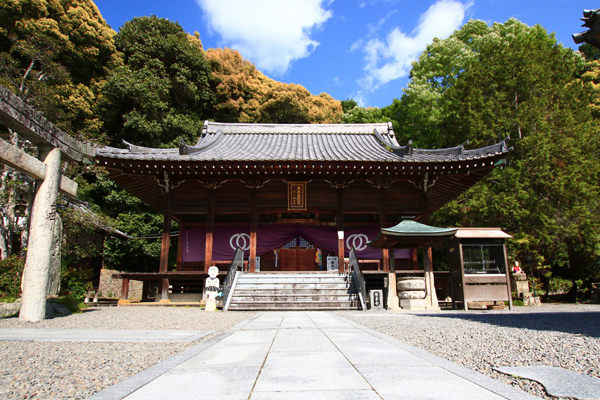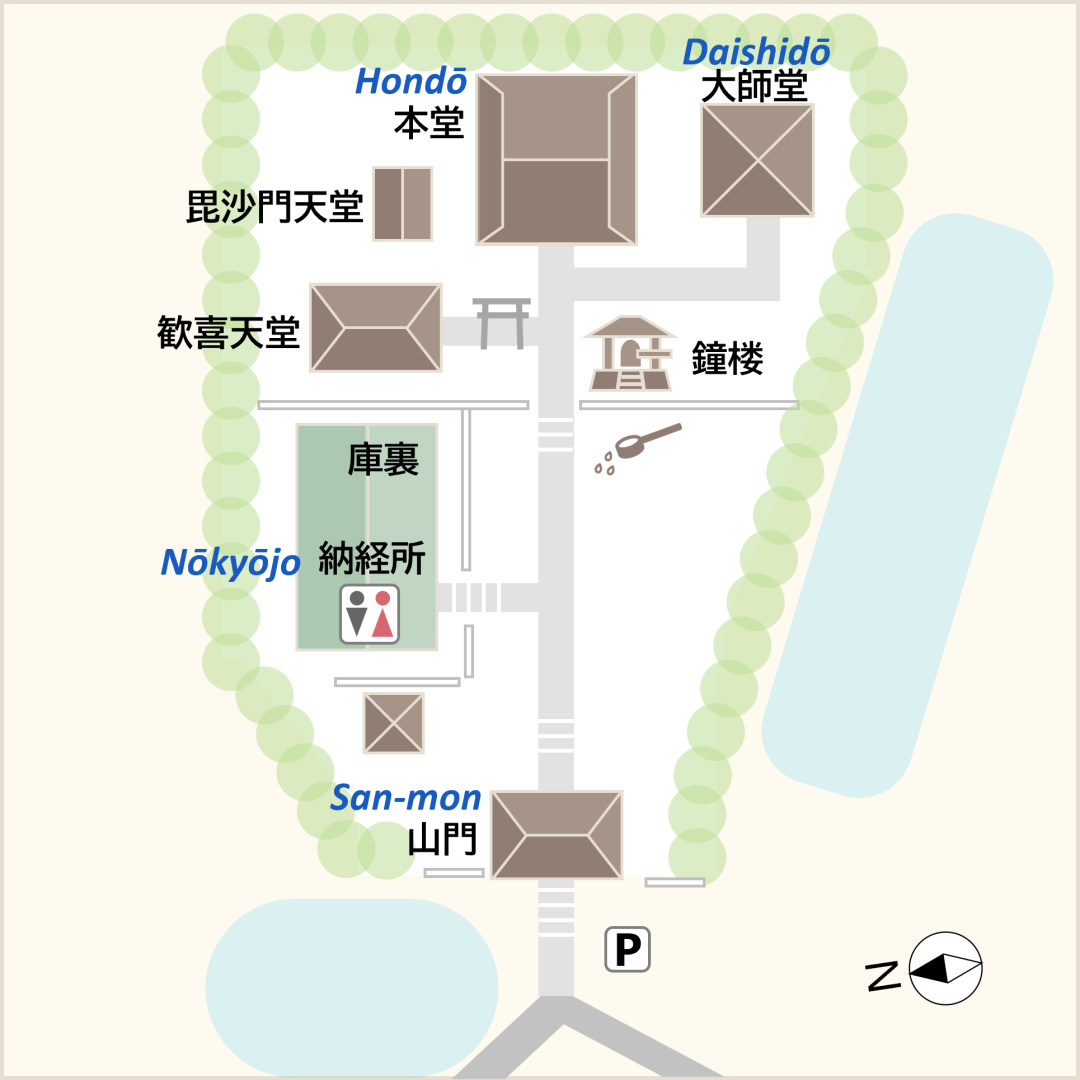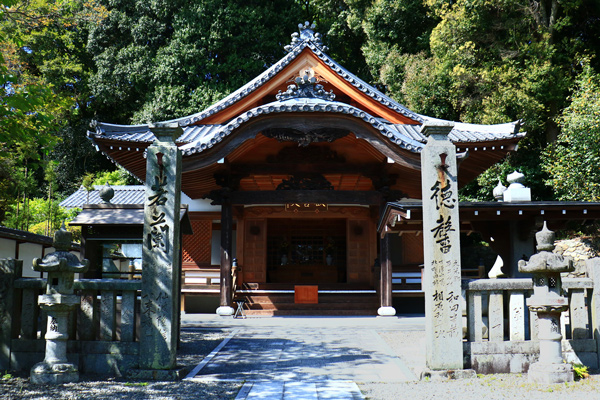The Shikoku Pilgrimage Temple Guide
Temple 50, Hantaji

Precinct map

History of the temple
Hantaji is located on a hill with a view of Matsuyama Castle, the city of Matsuyama, and the Seto Inland Sea. Because of its tranquil surroundings, the area around the temple has been designated a Scenic Forest Protection Area.
According to legend, the temple was built in the Tempyo-shoho period (749-757) by order of Emperor Kohken (749-758), and enshrines a statue of Yakushi Nyorai (Medicine Buddha) carved by Gyoki. The name of the temple came from the banner given to the temple as a ritual article by the emperor. During the Konin period (810-824), Kobo Daishi made a pilgrimage to this area and stayed at the temple.
The temple later declined, but was rebuilt with the help of Minamoto no Yoriyoshi, the provincial governor of Iyo (Ehime), and the monk Gyoren. In 1279, at the request of Emperor Go-Uda (reigned 1274-1287), Mongetsu Shonin prayed for the repulsion of the Mongolian army, which was preparing for a second attempted invasion of Japan. Ippen Shonin (1239-1289), the founder of the Jishu sect of Zen Buddhism, also stayed and practiced at the temple when he returned to Iyo from Dazaifu, Fukuoka in his youth. In his later years, in 1288, Ippen dedicated to the temple the Jodo Sanbu Kyō (Three Important Sutras of the Jodo Sect), which had been in the possession of his late father, Nyobutsu.
The temple also has a strong connection with Sennyuji in Kyoto, which is the family temple of the emperor. In 1395, by order of Emperor Go-Komatsu (reigned 1382-1412), the 26th head priest of Sennyuji, Kaio, became the 7th head priest of Hantaji. Because of this connection, the temple still retains tiles bearing Sennyuji's 16-petal chrysanthemum emblem.
During the Edo period (1603-1868), the Tokugawa family favored the temple. They even dedicated one of the three statues of the Kankiten that the fourth shogun, Ietsuna had. Thirty-six temples and more than 100 branch temples were located in the temple and flourished as a large temple.
Highlights
Statue of Kankiten
This statue is located in the Shodendo, to the left of the Hondo. It is said that if you pray to the statue, it will bring you wealth and fame, good luck with partnership and business, and will get rid of bad luck.
24ki ceiling painting
The ceiling of the bell tower depicts the 24 filial piety of China.
Memorial Stone pillar
It is located behind the stone pillar that has the temple name in front of the temple gate.This is the monument that fulfilled the reception for 10,000 pilgrims.

Annual Events
| January 16th, August 16th | Kankiten Daihannya Kitokai (Service of Chanting Wisdom sutras) |
| April 8 | Hana Matsuri (Buddha’s Birthday with free tea) |
| August 24 | Jizo Bon (Earth Treasury Day with Children's Sumo Tournament) |
| 16th of every month | Kankiten Ennichi (Nandikeśvar Day) |
Details
Names: Higashiyama, Rurikōin, Hantaji
Denomination: Shingon sect, Buzan school
Principal image: Yakushi Nyorai
Founder: Gyoki
Founded: Tenpyo Shoho era (749-757)
Access
Address: 32, Hatadera-cho, Matsuyama City, Ehime, 790-0912
Phone: 089-975-0910
Parking: Available (free of charge)
Lodging: None
Official website: None
